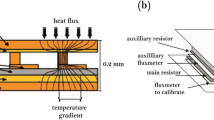Abstract
This paper discusses the effect of scale on the structural behaviour of cement block masonry under various loading condition. A real scale model test makes possible to obtain data similar to real structures. Financial and practical restrictions on testing real scale models, reduced scale modeling becomes popular to understand the overall behaviour of the structure. But, when the reduced scale model used for testing, the scale might have affected its mechanical properties. Therefore, it is important to understand these changes in order to draw correct conclusion on the prototype behaviour. In general, this study was aimed at understanding of the scale model behaviour of masonry by testing masonry components to determine the masonry properties, looking at a comparison of masonry behaviour at prototype and scale models. The performance of four different scale cement masonry was evaluated. Water absorption, compressive strength of cement block, and compressive, shear and flexural tensile strength of masonry prism were measured on each type of scale model. These mechanical properties are used as indicators of potential performance in masonry. Test results show that; apart from the compressive strength of masonry which not significantly influenced by the scale, all other tested properties, namely; water absorption rate, porosity, shear strength and flexural bond strength seemed to be significantly influenced by the scale.









Similar content being viewed by others
References
Anderson C, Held LC (1986) The effect of sand grading on mortar properties and tensile bond strength of brickwork specimens. In: 8th international load bearing brickwork symposium, London
Avila L, Vasconcelos G, Lourenço PB, Mendes N, Alves P, Costa AC (2012) Seismic response analysis of concrete block masonry buildings: an experimental study using shaking table. In: 15th world conference on earthquake engineering, Lisbon
British Standards Institution (1999) BS EN 1052-1:1999. Methods of test for masonry—part 1: determination of compressive strength. BSI, London
British Standards Institution (1999) BS EN 1052-2:1999 methods of test for masonry—part 2: determination of flexural strength. BSI, London
British Standards Institution (2002) BS EN 1052-3:2002 Methods of test for masonry—part 3: determination of initial shear strength. BSI, London
David FW, Nolle H (1982) Worked examples in experimental modelling. In: David FW, Nolle H (eds) Experimental modelling in engineering. Butterworth-Heinemann, London, pp 92–160
Egermann R, Cook DA, Anzani A (1991) An investigation into the behaviour of scale model brick walls. In: 9th international brick/block masonry conference, Berlin
Feng T (2012) Effect of mortar joint thickness on the compressive strength of autoclaved flyash-lime brick masonry. Appl Mech Mater 190–191:462–466
Groot C (1993) Effects of water on mortar–brick bond. PhD Dissertation, Delft University of Technology, The Netherlands
Güneyisi E, Mermerdaş K (2007) Comparative study on strength, sorptivity, and chloride ingress characteristics of air-cured and water-cured concretes modified with metakaolin. Mater Struct 40(10):1161–1171
Hamedzadeh A (2013) On the shear strength of partially grouted concrete masonry. M.Sc Dissertation, University of Calgary
Harris B, Bunsell AR (1977) Structure and properties of engineering materials. Longman, London
Harris HG, Sabnis GM (1999) Structural modeling and experimental techniques, 2nd edn. CRC Press, Boca Raton
Hendry AW, Murthy CK (1965) Comparative tests on 1/3 and 1/6 scale model brickwork piers and walls. Br Ceram Soc 4:45–66
Hilsdorf HK (1969) An investigation into the failure mechanism of brick masonry under axial compression in designing. In: Johnson FB (ed) Engineering and constructing with masonry products. Gulf Publishing, Houston
Hughes TG, Kitching N (2000) Small scale testing of masonry. In: 12th international brick/block masonry conference, Madrid
Leonardo AV (2014) Seismic behavior of concrete block masonry buildings, Ph.D Dissertation, University of Minho
Long L, Hamid AA, Drysdale RG (2005) Small-scale modelling of concrete masonry using ½ scale units: a preliminary study. In: 10th Canadian masonry symposium, Calgary
Lourenço PB, Avila L, Vasconcelos G, Alves JPP, Mendes N, Costa AC (2013) Experimental investigation on the seismic performance of masonry buildings using shaking table testing. Bull Earthq Eng 11(4):1157–1190
Lourenço PB, Barros JAO (2000) Size effect on masonry subjected to out-of-plane loading. In: 12th international brick/block masonry conference, Madrid
Mohammed AG (2006) Experimental comparison of brickwork behaviour at prototype and model scales. PhD Dissertation, Cardiff University
Moss JB (1971) Properties of engineering materials. Butterworth, London
Nwofor TC, Sule SA (2012) Mathematical model for the prediction of optimum mortar joint thickness in brick–mortar couplet. Adv Appl Sci Res 3(3):1767–1771
Pavia S, Hanley R (2010) Flexural bond strength of natural hydraulic lime mortar and clay brick. Mater Struct 43(7):913–922
Sabnis GM, Aroni S (1971) Size effect in material systems—the state of the art. In: Southampton 1969 civil engineering materials conference, Southampton
Sabir BB, Wild S, O’Farrell M (1998) A water sorptivity test for mortar and concrete. Mater Struct 31:568–574
Sarangapani G, Venkatarama Reddy BV, Jagadish KS (2005) Brick-mortar bond and masonry compressive strength. J Mater Civ Eng 17(2):229–237
Sathiparan N, Anusari MKN, Samindika NN (2014) Effect of void area on hollow cement masonry mechanical performance. Arab J Sci Eng 39(11):7569–7576
Tomaževič M, Velechovsky T (1992) Some aspects of testing small-scale masonry building models on simple earthquake simulators. Earthq Eng Struct Dyn 21:945–963
Vaibhav S, Durgesh CR (2014) Suitability of half-scale burnt clay bricks for shake table tests on masonry walls. J Mater Civ Eng 26:644–657
Venkatarama Reddy BV, Gupta A (2008) Influence of sand grading on the characteristics of mortars and soil–cement block masonry. Constr Build Mater 22:1614–1623
Acknowledgments
The authors express their sincere gratitude for the support given by Building Material and Construction Laboratory, Department of Civil and Environmental Engineering, Faculty of Engineering, University of Ruhuna. This research was supported in part by university research grant at the University of Ruhuna.
Author information
Authors and Affiliations
Corresponding author
Rights and permissions
About this article
Cite this article
Sathiparan, N., Anjalee, W.A.V. & Kandage, K.K.S. The scale effect on small-scale modelling of cement block masonry. Mater Struct 49, 2935–2946 (2016). https://doi.org/10.1617/s11527-015-0696-1
Received:
Accepted:
Published:
Issue Date:
DOI: https://doi.org/10.1617/s11527-015-0696-1




